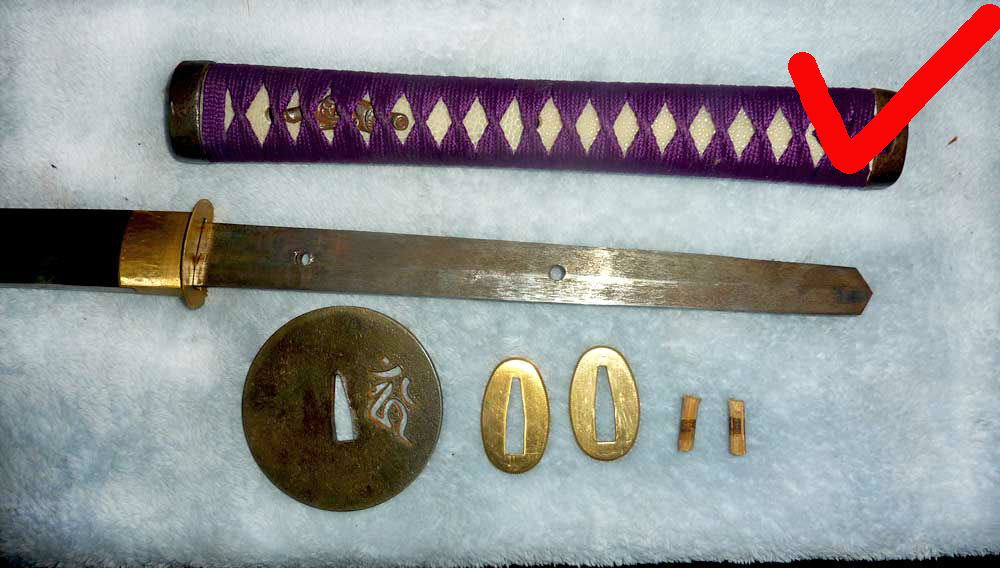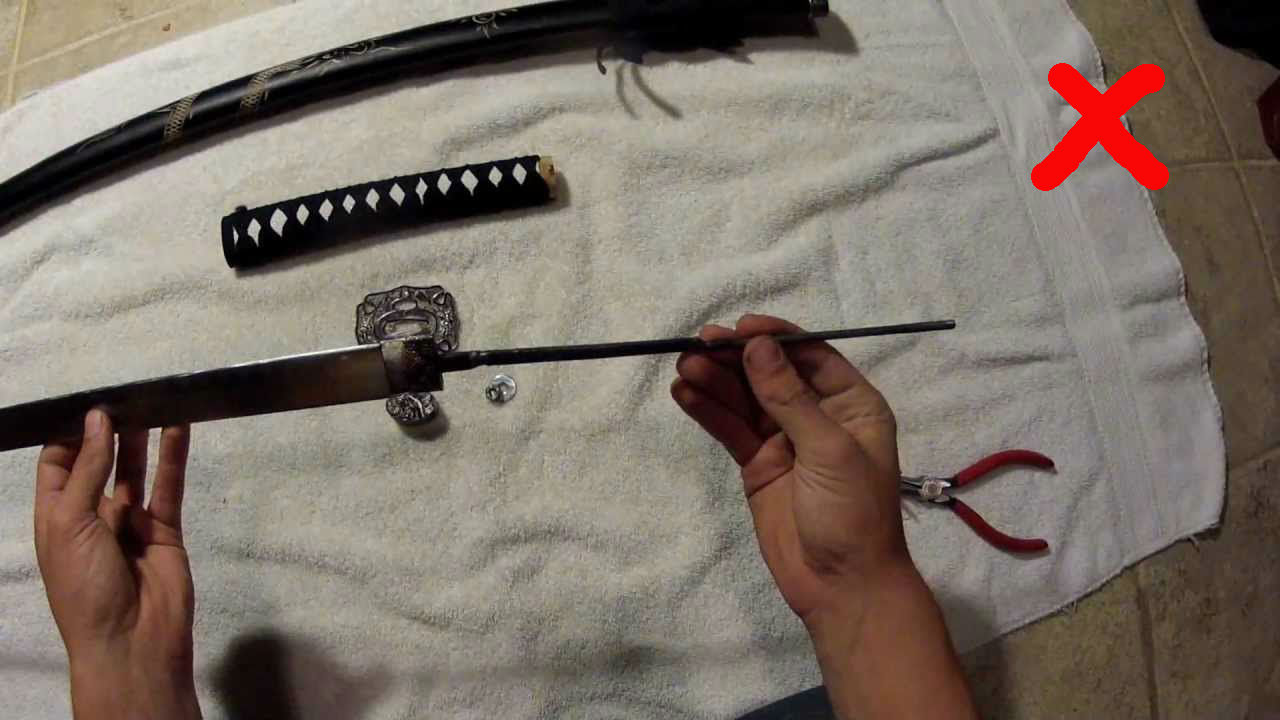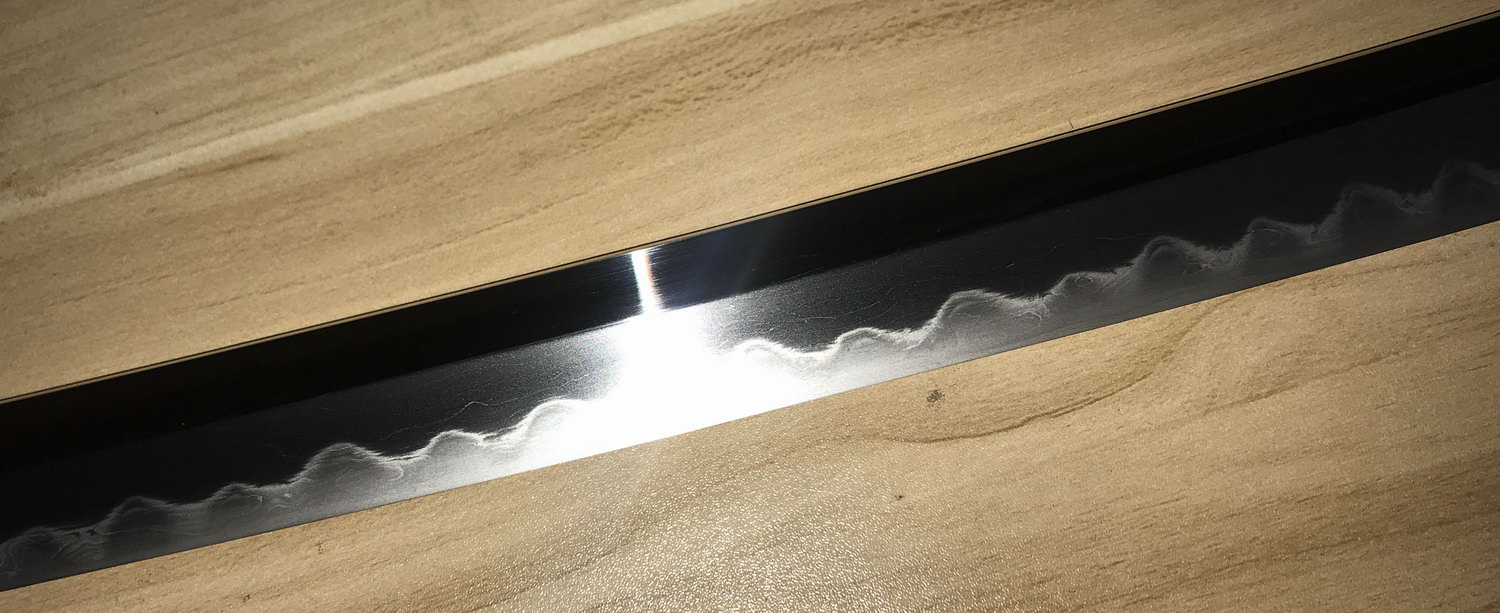Choosing and Customizing Your Sword
If you are beginning to use or collect swords, you need to know the difference between a real sword and an ornamental wall-hanger before you buy.
Ornamental swords look like a sword but they are used for decoration purposes only, hung on a wall or displayed on a sword rack. They have non-tempered blades, are not functional and have a welded tang. These swords are not for practice or combat and are dangerous to use outside of their decorative purpose.
A real sword is properly heat treated and tempered to make the blade flexible, has a hard edge that can be sharpened and keep that edge and the blade can flex without snapping, a blade ready for real use. Full tangs are necessary, one piece of steel from the tip of the blade through to the tang. The sharpening or dullness of the blade is up to you and how you intend to use the blade, practice, cutting or part of or the beginning of your collection.
Sinosword has been creating swords with our dedicated forge for more than 10 years,. In that time we had accumulated important experience and a reputation for excellence in our swords. So, whether you are beginner, a martial arts practitioner or enthusiast, we can make a sword for your needs. Send your questions if you have no idea to choose and we can help find a sword to fit you.


1) Stick to your budget.
For many, a good hand
forged sword is out of reach, good quality swords are very expensive and not
everyone can manage to buy one. However, we make a good quality bladesaffordable.
Sinosword balances between what you think you can afford and our quality swords
pricing We are able to produce high level forged swords within your budget.
Even if you have a budget less than $100, you still can get a quality sword
from us.

2) How Your Sword Will Be Used
In the past, when swords were more
relevant, their purpose was simple, it was to attack or defend yourself. But
today, it’s not only a weapon, it is a tool for
learning a self development training system and a treasured part of any sword
connoisseur’s collection.
Through training with the sword you learn
more than just how to use the sword but develop yourself. It’s very rarely, if ever, a sword is used as
weapon for combat , it is used frequently in martial arts training, iaido
practice,tameshigiriandsparring.
Swords are also collected for display, for
aesthetics, the beauty of the sword and fittings.Therefore, your choice is very
personal, finding the right sword for you and your collection isimportant.
The blade is the most important element of
a sword, it is the soul of the sword. Sostart with learning more about the
blade.In general, tamahagane, (folded steel), T10 and 1095 high carbon mono
steel, 9260 spring steel, 1050 highcarbon steeland aluminium.The T10 and 1095 high carbon, 9260 spring steel, 1050
highcarbon
steels can be mono steel or
folded blades, steel in layers achieved by folding the billet or starting steel
block. All our swords are quality, either our folded steel or any of our solid
steel blades, as with most quality modern metals are of build quality
impossible to be matched in the past.
1. Training Swords For Iaito or Battōjutsu
If you are practicing
iaido or Battōjutsu, or any other martial arts that use blades, whether a
beginner or expert, a dull edge and tip are necessary for safety. We recommend
1050 carbon steel with a lightweightbladeand put together right, solid and tight. A
Bo-hi groove for beginners is an excellent aid for blade alignment. Aluminium
blades are a good option if you want a very light blade. As a cutting edge is
not used in practice, it is useless to have a blade edge with high hardness
meant to be sharpened.A durable and affordable blade are the most important.
Our swords have a great feel in the hand, are tightly made and well balanced.

2. For test cutting
If you are tameshigiri practicer or senior trainer of iaido. Then required blade have a very good heat treatment and tempered, and cutting edge hardness.especially, blade durability become the most important when we do cutting practice day after day. That’s why we recommend 1050 carbon steel with clay tempered hamon, T10/1095 high carbon steel with hamon or not. Another reason is price also very reasonable, truly Achieved functional and affordable balance.

3. Sword
Collections
If you are an enthusiast of swords, you might have higher needs,
not settling for a basic, functional sword. A quality and high grade sword is
an artwork. A foldedsteel blades with a visiblegrain(hada)is fascinating to see,
similar to water pooling at the seaside in random lines. If this is interesting
to you then add a variety of choices for Hamon line types and a high grade
mirror polishing on a Tamahagane bladewill meet your requirements. Thistraditionalfolded Japanese sword
steel blends different steels together in layers, folding the white hot billet,
hammering it out, folding again and again to make a many layered blade of
steel.These blades offer a great balance of flexibility and hard steel on the edge
to keep it sharp,improving blade functional,
strength and great beauty for the collector.
The forgedTamahagane
steelis
not easy to produce, it’s gruelling and time-consuming work to
make. That’s why it extremely expensive if import from Japan.
Sinosword forged has been making our own in-houseTamahagane using traditional
methodssince 2006. As we forge our own steel, there is no importation fees and
makingour Tamahagane remarkably affordable. Our top grade steel, Tamahagane hasexquisite and delicate
folded grain and after jizuya polishing the grain revealed in detail. Great for
daily cutting practice this steel exhibits the metallurgic artand can proudlybe
displayedin anycollection.

4. Sinoswords and Practical Usage
If you are practitioner
of HEMA and use swords for sparring or practicing historiccombattechniques, we recommend 9260 steel or
carbon steel, aflexible, heat treatedtemperedblade. Lacking a sharp edge, the pliant and
durable blades offer blunt cuts and flex when thrusted for safety. We do not
recommend stainless steel for sword blades that are used in training as it is a
brittle metal to use for blades longer than 12” and even then must have a thick
back.

3) Choosing
proper furniture
A
sword is not just ablade…it includes a
support system of mountingsboth for function and appearance of the sword.When
choosing mountings and furniture for your custom sword, you might take into
account theblade gradeand and match it to the quality of
furniture. For example, if you want to customisedkatana, wecan recommend corresponding matching fittings, Saya,
Tsuka, etc.. We have matched pairings of these elements which has helped keep
the prices down and optimises the function of your sword. For a high grade katana,
it maymerit high grade fittings, blade lamination, Hamon style, Rayskin color, Saya, Tsuka with hishigami, etc.
With
Chinese swords, the complexity of the furniture effects sword price, the
scabbard materials, fittings materials and engraving raise the costs.
All in
all, choose furniture according to your blade grade and make selections you can
afford to get the best sword for your money. Remember,bladeshavesouls and it is best to keep on their good
side of your sword, so get the best you can afford.

4) Choosing blade length base on height
A unique and right sword should be fit your height, please check our recommend blade length chart as following.
|
Recommend blade length fit for height
|
|
Height
|
Recommend blade length
|
Recommend tsuka length
|
|
150cm
|
65cm
|
26"
|
23cm
|
9"
|
|
155cm
|
67cm
|
26 2/5"
|
25.5cm
|
10"
|
|
160cm
|
69cm
|
27 1/5"
|
25.5cm
|
10"
|
|
165cm
|
71cm
|
28"
|
27cm
|
10 3/5"
|
|
170cm
|
73cm
|
28 4/5"
|
27cm
|
10 3/5"
|
|
175cm
|
75cm
|
29 1/2"
|
29cm
|
11 2/5"
|
|
180cm
|
77cm
|
30 3/10"
|
30.5cm
|
12"
|